Exploring the Use of Bleach in Washing Machines
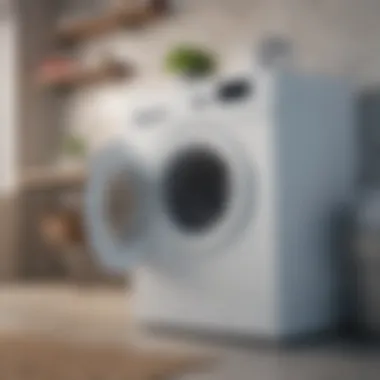

Intro
The use of bleach in washing machines presents a complex interplay of benefits and drawbacks. It's common knowledge that bleach can disinfect and remove stains effectively, yet it also raises concerns about fabric damage and environmental impact. Many homeowners are navigating these challenges in pursuit of a cleaner wardrobe, which leads to the necessity of understanding both the efficacy and risks of this cleaning agent.
This article aims to dissect these elements, helping readers make informed decisions about using bleach in their laundry routines. By providing insights into fabric compatibility, environmental consequences, and alternative cleaning methods, we can create a clearer picture of this contentious topic.
Key Insights and Trends
As trends evolve in home maintenance and sustainability, the use of bleach in household cleaning routines has come under scrutiny. Its role in effective cleaning cannot be understated, but an increasing number of consumers are seeking eco-friendly alternatives. Here are some key points to consider:
- Disinfectant Demand: The ongoing emphasis on hygiene, especially due to recent global health events, has heightened the demand for disinfectants like bleach in household cleaning routines.
- Fabric Awareness: More homeowners are now aware of how various materials react to chemical treatments, seeking guidance on fabric compatibility with bleach.
- Sustainability Focus: There is a growing trend towards environmentally conscious cleaning practices. This has led to the discovery of alternative options to bleach.
These trends indicate a shift in consumer behavior, encouraging a more nuanced understanding of product usage in home cleaning.
Practical Tips and How-To Guides
Using bleach safely and effectively involves understanding best practices for its application in washing machines. Here are practical tips to ensure optimal cleaning without damaging fabrics:
- Read Labels Carefully: Always check the care labels on fabrics. Materials like cotton and polyester often tolerate bleach, while others, like silk and wool, don't.
- Dilution is Key: Household bleach should typically be diluted before adding to a wash cycle. A common mix is 1 cup of bleach per gallon of water. Avoid direct contact with fabrics until diluted.
- Use at the Right Time: Add bleach during the washing machine's bleach cycle or at the right point in the wash cycle to ensure effective cleaning.
- Test for Colorfastness: Before using bleach on colored fabrics, test a small, inconspicuous area for colorfastness.
- Ventilation Matters: Ensure proper ventilation when using bleach to avoid inhaling fumes. This includes keeping windows open or using a fan.
The End
"Understanding fabric care and the implications of using strong chemicals like bleach can lead to more sustainable cleaning choices." - Laundry Expert
Preface
The use of bleach in washing machines is a subject that resonates with many homeowners and laundry enthusiasts. It is essential to understand the implications of incorporating bleach into laundry routines. This article explores various aspects, ranging from the efficacy of bleach as a cleaning agent to its compatibility with different fabrics.
Bleach is often viewed as a powerful solution for stain removal and disinfection. Its ability to brighten whites and eliminate germs presents notable benefits for those seeking clean and sanitized laundry. However, the introduction of bleach raises several considerations that must be taken into account.
Firstly, there are potential risks associated with using bleach. These include fabric damage and color alteration, which can compromise the integrity of clothing. Furthermore, understanding the health concerns linked to bleach, such as skin irritation and respiratory issues, is vital.
Additionally, environmental impacts cannot be overlooked. The consequences of using bleach on water systems and the importance of considering biodegradable alternatives are significant points of discussion.
This article aims to provide a comprehensive overview of using bleach in washing machines, emphasizing practical guidance, best practices, and alternatives that promote both fabric care and environmental sustainability. By delving into this topic, readers will gain valuable insights to make informed decisions in their laundry processes.
Understanding Bleach
Understanding bleach is fundamental when considering its application in washing machines. The implications of using bleach extend into various aspects, including effectiveness, safety, and environmental impact. A comprehensive understanding of bleach allows homeowners and users to make informed choices while optimizing laundry processes. In this section, we will cover various types of bleach, their chemical properties, and their advantages and disadvantages.
Types of Bleach
Bleach comes in several formulations, each with distinct properties and uses. Primarily, we recognize two main types: Chlorine Bleach and Oxygen Bleach.
Chlorine Bleach
Chlorine Bleach is a powerful disinfectant. It is commonly used for its ability to kill germs and handle tough stains. One key characteristic is its strength. Chlorine bleach works effectively on white fabrics, restoring brightness and cleanliness. This makes it a popular choice for ensuring a deep cleaning of laundry. However, using chlorine bleach has its downsides. It can weaken fabrics over time, leading to wear and tear. Moreover, it is not suitable for colored fabrics, as it can cause discoloration.
This type of bleach is often found in household brands such as Clorox, which emphasizes its efficacy in stain removal.
Oxygen Bleach
Oxygen Bleach presents a milder alternative. It consists of sodium percarbonate or hydrogen peroxide. The key characteristic of oxygen bleach is its ability to work in both hot and cold water. This versatility enhances its appeal. It's beneficial in preserving the integrity of various textiles, including colors, because it does not cause fading. Another unique feature is its environmental friendliness; it generally breaks down into harmless substances.
However, oxygen bleach is less effective on extreme stains when compared to chlorine bleach. Brands like OxiClean leverage this gentle but effective cleaning aspect, making it a popular choice among those who prefer an eco-conscious option.
Chemical Composition and Properties
Understanding the chemical composition of bleach is crucial in delineating its utility in washing. Each component contributes specific properties that enhance or limit its effectiveness.
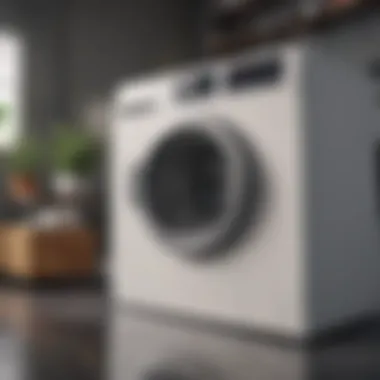
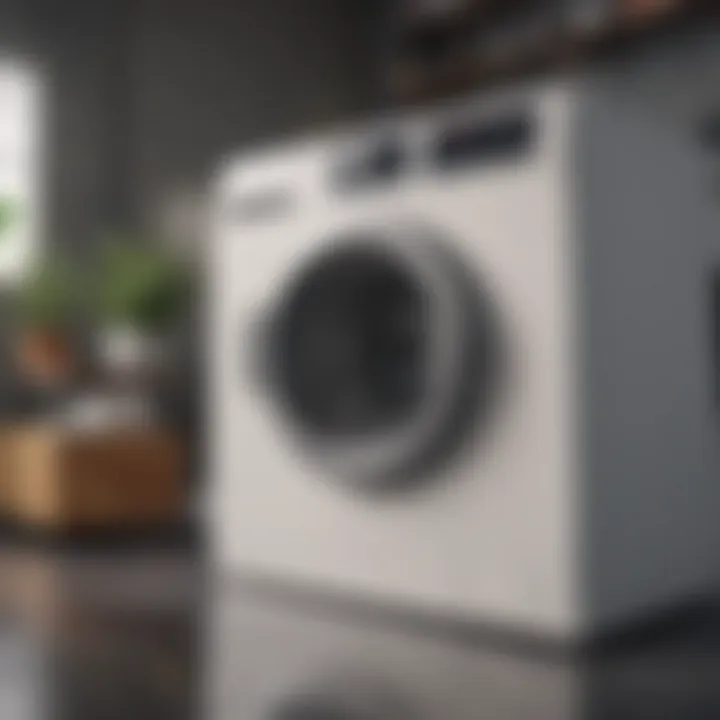
Active Ingredients
The active ingredients in bleach define its potency and functionality. For Chlorine Bleach, sodium hypochlorite serves as the main active compound. This potent ingredient plays an essential role in killing bacteria and removing stains. The high effectiveness of sodium hypochlorite comes at the risk of fabric damage, making it crucial to consider when choosing bleach for laundry.
On the other hand, Oxygen Bleach typically utilizes sodium percarbonate or hydrogen peroxide. This offers effective cleaning action that is gentler on fabrics. This is highly beneficial for users who want to avoid damage while still achieving clean results.
Concentration Levels
Concentration levels dictate how bleach performs during the washing process. Chlorine bleach may come in varying concentrations, and higher concentrations can lead to more rapid damage to fabrics. It is critical for users to follow the manufacturer's guidelines to ensure both cleaning efficacy and safety of garments.
Oxygen Bleach also has concentration levels that vary among products. Generally, a lower concentration is effective for routine cleaning without harming fabrics. However, users should also be aware that less concentration may mean less effectiveness on very stubborn stains.
In summary, understanding bleach, its types, active ingredients, and concentration levels provides significant insight into its uses and implications in washing machines. By knowing these factors, homeowners can enhance their laundry experiences while minimizing risks.
Compatible Fabrics
Understanding the compatibility of fabrics with bleach is crucial for homeowners and individuals who regularly manage laundry. Different types of materials respond uniquely to bleach, which can significantly affect the overall outcome as well as the lifespan of the fabrics involved. Choosing the right fabric to use with bleach can enhance cleaning efficacy while preventing potential damage or discoloration.
Cotton and Linens
Cotton is one of the most common fabrics used in households. It is often chosen for its durability and comfort. When using bleach on cotton and linens, it can effectively tackle tough stains and impart a brightened look to white textiles. However, caution is essential as undiluted bleach can weaken the fibers over time.
For effective results, it's recommended to:
- Dilute bleach in a sufficient amount of water before adding it to the wash.
- Avoid using bleach on colored cottons, as it can lead to discoloration.
Synthetic Fabrics
Synthetic materials such as polyester, nylon, and spandex can present complications when interacting with bleach. While some synthetic fabrics may tolerate small amounts of bleach, they are more prone to damage. Exposure to bleach can lead to degradation of fibers over time, affecting the elasticity and overall integrity of the clothing.
- It’s wise to check the care label before applying bleach.
- As a safer alternative, consider laundering with oxygen-based bleach or non-chlorine options, which tend to be less harsh on synthetics.
Delicate Fabrics
Delicate fabrics like silk and wool require very careful handling. Bleach is generally not recommended for these materials as it can lead to irreversible damage. Even a minor exposure could weaken fibers and cause fading.
In addition:
- Use alternative cleaning methods, such as using cold water with specialized detergents for delicate items.
- Always ensure proper care according to the manufacturer’s guidelines.
To minimize risks associated with bleach use, understanding the specific needs of each fabric type can contribute significantly to not only preserving their quality but also achieving the desired cleaning results.
"Using bleach incorrectly can lead to minimal or severe fabric damage, dependent on the material composition."
By educating ourselves about each fabric's interaction with bleach, we can make informed decisions that align with our cleaning goals while protecting our clothing investments.
Bleach Application Methods
Understanding the methods of applying bleach in washing machines is vital for several reasons. Proper application techniques can enhance cleaning efficacy while minimizing risks to fabrics and preserving the machine's performance. Choosing the right application method depends heavily on fabric type, stain severity, and personal preferences regarding safety and environmental impact.
Direct Application in the Washer
Direct application involves adding bleach directly into the drum of the washing machine along with clothes. This method is straightforward but should only be used with compatible fabrics. It ensures stronger stain removal, particularly for whites. However, fabrics may encounter uneven bleaching or damage if not managed correctly. To mitigate risk, it is recommended to use high-efficiency washing machines that can dilute the bleach evenly during the wash cycle. Furthermore, read on the detergents used as some may react negatively with bleach. Always check labels before combining.
Dilution Techniques
Using dilution techniques is essential to safeguard fabric integrity. Concentrated bleach can cause significant damage, especially on delicate items. To dilute, mix bleach with water before adding to the washing machine. A common practice is to use a 1:10 ratio of bleach to water for most cleaning tasks. This helps in reducing the likelihood of color alteration and fabric wear. It's important to follow precise measurement guidelines for consistent results. For specific fabric types, dilution rates may vary, so consult the manufacturer's instructions.
Using Bleach Dispensing Compartments


Most modern washing machines feature a bleach dispensing compartment designed for this purpose. Utilizing this compartment allows for a controlled release of bleach during the wash cycle. This method reduces the risk of direct contact with fabrics and enables better distribution throughout the load. Additionally, using the dispenser means that bleach is diluted automatically, which is ideal for ensuring a thorough yet gentle cleaning process. When using this method, it's crucial to keep the dispenser clean to prevent residue build-up, which could lead to unintended bleaching.
"Applying bleach improperly can lead to irreversible damage to clothes. It is essential to follow guidelines for safe usage in washing machines."
Risks of Direct Bleach Use
The use of bleach in washing machines presents several risks that merit serious consideration. Understanding these risks is essential for homeowners and laundry aficionados who aim to maintain fabric integrity while achieving cleanliness. Ignoring the potential consequences can lead to deteriorated fabrics, unexpected color changes, and health concerns for users.
Fabric Damage
One of the most significant risks associated with direct bleach application is fabric damage. Bleach is a powerful chemical that can weaken fibers in clothing. For instance, cotton, while generally durable, can become brittle over time when constantly exposed to bleach. Similarly, synthetic fabrics may lose elasticity, leading to clothes that no longer fit properly.
Also, items made from delicate materials like silk or wool are especially vulnerable. Direct bleach application can result in irreparable harm to these fabrics. It is crucial to read care labels and use bleach only when fabric compatibility is confirmed. If you wish to sanitize or remove stains from these sensitive items, consider using oxygen bleach as a safer alternative.
Color Alteration
Another risk involves color alteration. Bleach can strip colors from fabrics, leaving behind unwelcome shades or lighter patches. This outcome can be particularly distressing for those who take pride in their clothing collections. Dark colors are especially susceptible to this effect, leading to a more faded appearance over time.
People often expect consistent color and vibrancy in their garments. However, it only takes one wash with undiluted bleach to result in undesirable color shifts. To minimize risks, always conduct a patch test on a small, inconspicuous area of the fabric before proceeding with a full wash. This approach can save you from disappointment and preserve your wardrobe.
Health Concerns
Lastly, there are notable health concerns associated with bleach use. The fumes produced by chlorine bleach can be irritating to the respiratory system. Prolonged exposure may lead to breathing difficulties or exacerbate conditions like asthma. Furthermore, skin contact with bleach can cause irritation or chemical burns.
To ensure safety when using bleach, it is advisable to wear gloves while handling it and to work in well-ventilated areas. Mixing bleach with other substances, such as ammonia, poses additional risks and can create toxic gases. By following safety guidelines and being aware of potential hazards, users can enjoy cleaner garments while minimizing health risks.
While bleach can effectively remove stains and sanitize, the risks of fabric damage, color alteration, and health issues must be balanced against its benefits.
Environmental Considerations
Understanding the environmental implications of using bleach in washing machines is crucial. Bleach, particularly chlorine bleach, has significant effects on both water systems and overall ecological health. When bleach enters the wastewater from laundry, it can contribute to aquatic toxicity. This toxicity affects various organisms, disrupting local ecosystems.
Impact on Water Systems
The introduction of bleach into water systems can lead to the formation of harmful byproducts. Chlorine bleach, when discharged into waterways, can react with organic matter to create chlorinated compounds. These substances are not only toxic but can persist in the environment, posing risks to aquatic life. Fish and other water organisms can suffer from respiratory issues and other health concerns due to exposure to these chemicals.
Additionally, municipal waste treatment facilities may not effectively remove all of the bleach and its byproducts. This can lead to contaminated water sources, affecting both wildlife and human populations who rely on these systems. The increased demand for water purification subsequently places additional stress on municipal resources.
Biodegradability and Alternatives
When considering bleach's environmental impact, biodegradability is a key factor. Chlorine bleach is not readily biodegradable, leading to concerns about its accumulation in the environment. Therefore, looking for cleaning alternatives that are biodegradable can be a responsible choice.
Alternative cleaning agents include hydrogen peroxide and oxygen bleach, which break down more easily in the environment.
Natural methods for stain removal can also reduce reliance on chemical agents. Ingredients such as vinegar, baking soda, and essential oils can provide effective cleaning without the adverse environmental effects associated with bleach. When selecting cleaning products, consumers should consider their environmental footprint.
In summary, examining the impact of bleach on water systems and its biodegradability showcases the need for alternatives. As awareness grows, homeowners and individuals in all sectors can actively seek eco-friendly options that balance cleaning effectiveness with environmental stewardship.
Best Practices for Using Bleach
When it comes to utilizing bleach in washing machines, understanding the best practices is essential. This section will emphasize how proper use can maximize cleaning efficacy while minimizing potential hazards to fabrics and health. It is crucial to adhere to specific protocols, as misapplication can lead to severe damage or decreased effectiveness of the bleach.
Safe Mixing Guidelines
Mixing bleach with different substances can lead to dangerous reactions. Always follow these safe mixing guidelines to ensure safety during laundry tasks:
- Do Not Mix with Ammonia: Combining bleach and ammonia releases toxic chloramine vapors, which can cause respiratory issues and irritation.
- Dilution is Key: Always dilute bleach before adding it to the wash. Use a ratio of one part bleach to ten parts water for optimal safety and effectiveness. This helps avoid fabric damage while ensuring that bleach is still potent enough to eliminate stains.
- Use Appropriate Containers: When mixing bleach, ensure you use non-metallic containers, such as plastic or glass. Metal can react chemically with bleach, causing degradation and potentially harmful effects.
Implementing these guidelines not only protects the user but also preserves the integrity of the washable items in the machine.
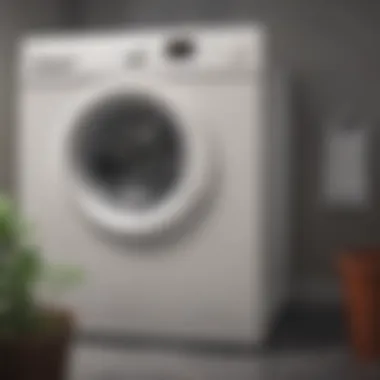
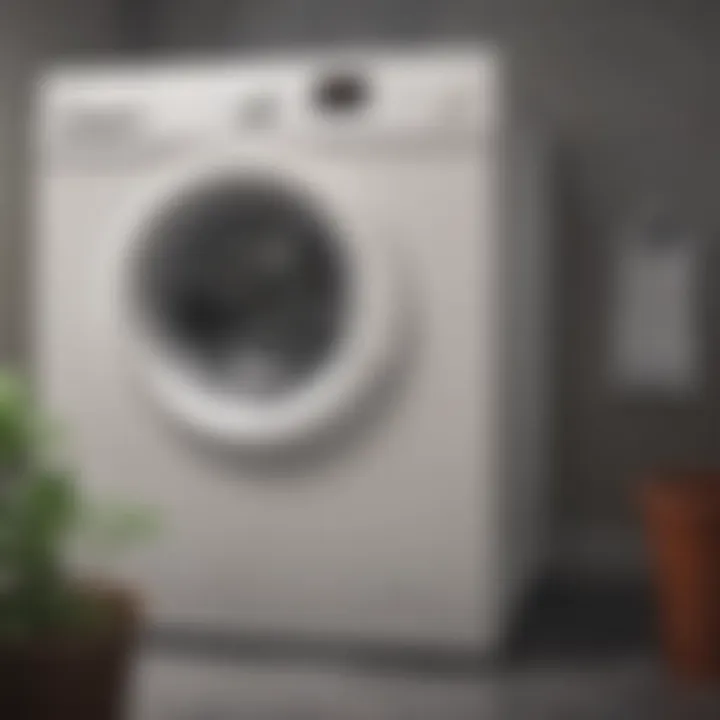
Manufacturer Guidelines
Following manufacturer guidelines when using bleach is another critical aspect to consider. Here are key points:
- Refer to Labels: Always check clothing labels for care instructions. Some fabrics may explicitly state not to use bleach or recommend specific types.
- Use Manufacturer's Products: Some washing machines offer proprietary bleach dispensers specifically designed to handle bleach. Follow the manufacturer's guidelines regarding the appropriate bleach quantity to avoid overflow and damaging the machine.
- Compatibility: Ensure that the bleach used is compatible with the machine model and the type of fabrics being washed. Some machines have settings that can influence how bleach interacts with the wash cycle.
Following these best practices will foster safer usage of bleach in washing machines while providing effective cleaning results. It also highlights the importance of a responsible approach to laundry, ensuring that both garments and users remain unharmed.
"Using bleach safely requires knowledge of proper handling and recognition of potential hazards. Careful attention to mixing guidelines and manufacturer recommendations will lead to better laundry practices."
Employing these practices will create a more informed and cautious laundry routine.
Alternatives to Bleach
The exploration of effective laundry practices often leads to the consideration of bleach, but it is also essential to recognize other viable alternatives. Bleach can cause damage to fabrics and raise health and environmental concerns. Thus, understanding alternatives can enrich the laundry experience without compromising safety or effectiveness. In this section, we will examine the different types of alternative cleaning agents and natural methods for stain removal.
Alternative Cleaning Agents
Many store-bought cleaning agents serve as effective substitutes for bleach. These products often contain enzymes or oxygen-based compounds that can tackle stains without the harsh effects of chlorinated bleach. Common alternatives include:
- Oxygen-based Bleach: This is a less potent, yet effective option for stain removal. Brands like OxiClean are popular for their gentleness on fabrics while still delivering strength against stains.
- Hydrogen Peroxide: This chemical is a mild bleach and can disinfect and whiten fabrics without causing yellowing.
- Baking Soda: While not a bleach replacement in the strictest sense, it is effective for deodorizing and mild stain removal. It can be combined with other agents for improved cleaning power.
Using these agents, homeowners can experience a clean result without exposing fabrics to the risks associated with traditional bleach. The choice of a particular agent largely depends on the specific cleaning needs and fabric types involved.
Natural Methods for Stain Removal
In recent years, there is an increased interest in eco-friendly practices. As bleach can be harmful to the environment, many individuals are turning to natural methods for cleaning. Here are several techniques:
- Vinegar: White vinegar can act as a fabric softener and natural cleaner. It helps in removing stains and odors effectively.
- Lemon Juice: The acidity in lemon juice can work as a bleaching agent when used on white fabrics, especially for perspiration or food stains.
- Salt: Utilizing salt is effective for lifting stains from fabrics. It can be particularly helpful for red wine or blood stains.
These natural methods promote the dual advantages of safe cleaning while minimizing environmental impact. Homeowners looking for safer and eco-conscious solutions will find these alternatives quite effective.
It is crucial to note that while these alternatives can be very effective, it is important to test any cleaning agent on a small, inconspicuous area of fabric first to ensure compatibility.
By enhancing the knowledge of these alternatives, it is not just about removing stains; it is about making informed choices that reflect a responsible attitude toward fabric care and environmental stewardship.
End
In this article, the use of bleach in washing machines is examined from multiple angles. It is essential for homeowners and individuals responsible for household cleaning to understand both the positive and negative implications of bleach usage. While bleach can effectively disinfect and sanitize fabrics, its application comes with risks that need careful consideration.
One of the significant elements detailed here is the compatibility of bleach with various fabrics. Cotton and linens often tolerate bleach well, while delicate fabrics may suffer irreversible damage. Awareness of fabric types ensures better decisions when it comes to laundering garments.
The benefits of using bleach, like its capacity to remove stains and whiten whites, must also be balanced against potential consequences such as fabric degradation and health concerns. People should note that while bleach may yield immediate results, prolonged use could weaken fibrous materials over time.
Environmental considerations raise additional dilemmas. The impact of bleach on water systems, along with its non-biodegradable nature, presents a challenge. Thus, using bleach responsibly involves understanding its ecological footprint.
In the end, this article serves as a valuable resource, offering insights into best practices, alternatives, and the detailed implications of using chlorine bleach. By synthesizing this knowledge, individuals can make informed decisions that optimize laundry processes while maintaining the integrity of their fabrics and considering their environmental duty.
"Informed choices can lead to effective laundry practices without compromising either fabric quality or environmental health."
The implications outlined here are relevant not just for practical homecare but also for creating a more sustainable approach to everyday cleaning.
Importance of Citing Sources
Including references is vital for various reasons:
- Credibility: Citing reputable sources enhances the authority of the article. It signals to the reader that the information is not merely anecdotal, but rather informed by expert knowledge.
- Verification: References allow readers to trace back to original studies, articles, or reports, enabling them to verify the findings themselves. This transparency is essential in a time when misinformation is prevalent.
- Broader Context: They provide context within which the understanding of bleach use can be situated. By referencing environmental studies or fabric care research, readers gain insight into broader implications of using bleach, not just focusing on personal laundry practices.
Types of Relevant References
When discussing bleach in washing machines, the following types of sources are particularly beneficial:
- Scientific Journals: Articles from peer-reviewed journals touch on the chemical interactions between bleach and fabrics, offering empirical data on effectiveness and safety.
- Consumer Reports: These are pivotal in assessing the efficacy of bleach in various situations, including stain removal and disinfection capabilities.
- Health Guidelines: References from public health organizations help clarify potential health risks associated with bleach usage, especially in households with children or pets.
- Environmental Studies: This research lays out the impact of bleach on water systems, providing insight into sustainability implications.
Closure on References
In summation, references add depth and integrity to the discussion on bleach usage in washing machines. They not only validate claims but also provide a road map for further inquiry into the subject. This comprehensive approach ensures that homeowners, interior design enthusiasts, party hosts, and gardening aficionados can glean well-founded knowledge to guide their household decisions. The relevance of trusted data cannot be understated; it anchors practical advice in a framework of intellectual rigor.



